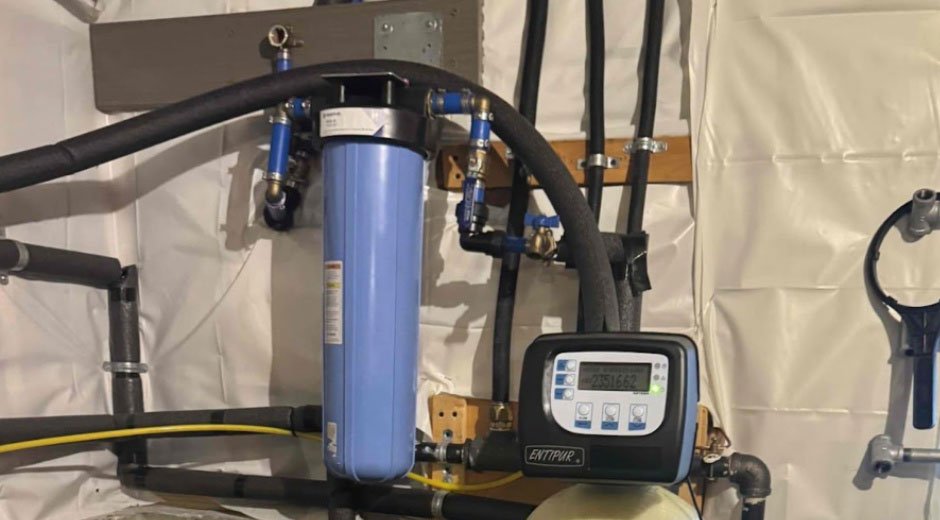Whether you’re managing a private home, a leisure facility, or a commercial property, water hygiene is something you simply can’t afford to overlook.
From the sparkle of a freshly cleaned swimming pool to the hidden workings of sewage treatment plants, every stage of water use requires care and maintenance in order to protect health, improve efficiency, and extend the life of your systems.
The importance of pool cleaning
For homeowners and leisure facilities alike, pool cleaning is more than a matter of aesthetics. Clear, sparkling water isn’t just pleasant to look at, but it’s a sign that the water is safe to swim in.
Left unattended, pools can quickly accumulate bacteria, algae, and debris, creating a breeding ground for harmful microorganisms. Regular cleaning prevents these issues, helping to maintain balanced water chemistry and reduce the need for excessive chemical treatments.
Good practice involves both manual cleaning, such as skimming leaves and brushing walls, and mechanical cleaning, using automated vacuums or filtration systems. Maintaining the correct pH and chlorine levels ensures a safe swimming environment and also prolongs the life of the pool’s infrastructure, from the lining to the filtration pumps.
Sewage treatment: unseen but essential
While swimming pools are in plain sight, sewage treatment systems often work quietly in the background. They are essential for processing wastewater from households, businesses, and public facilities. Modern sewage treatment plants are designed to remove contaminants before releasing water back into the environment, helping to protect natural ecosystems and public health.
Whether your property connects to a municipal treatment plant or uses a private septic tank, regular inspections are vital. Poorly maintained systems can lead to unpleasant odours, slow drainage, and potentially harmful overflows. In rural areas, where septic tanks are more common, sludge build-up must be removed periodically to keep everything functioning efficiently.
Maintaining waste pipes for smooth flow
Every water system depends on its waste pipes to carry away used water and waste materials. When these pipes become blocked or damaged, it can cause unpleasant smells, slow drainage, and even costly flooding. Common causes of blockages include grease build-up, food debris, hair, and foreign objects that shouldn’t be flushed down drains.
Preventative measures—such as installing drain strainers, avoiding the disposal of fats and oils down sinks, and carrying out regular pipe flushing—can go a long way towards preventing clogs. In commercial kitchens, where large volumes of waste water are processed daily, grease traps and regular professional pipe maintenance are essential.
Water storage tanks: safeguarding clean supply
At the other end of the system, water storage tanks hold clean water for domestic, commercial, or industrial use. These tanks can range from small attic-fed cold-water cisterns in homes to large reservoirs for agricultural or manufacturing purposes, where water might be used in everything from production lines to cleaning essential warehouse supplies.
Over time, water tanks can accumulate sediment, scale, and bacterial growth, particularly if they are not sealed or cleaned regularly. Contamination in stored water poses serious health risks, so routine cleaning and disinfection are crucial. In the UK, water regulations require that tanks supplying drinking water are well-maintained and covered to prevent contamination from pests, dust, or debris.
Professional tank cleaning involves draining, scrubbing internal surfaces, and disinfecting before refilling. In some cases, tanks may need repairs or replacement if cracks or corrosion are detected.
Creating a complete water management plan
Looking at all these elements—pool cleaning, sewage treatment, waste pipe care, and water storage tank maintenance—it’s clear that each plays a vital role in keeping water systems functioning effectively. The most successful approach is to treat them as interconnected parts of a bigger picture.
A comprehensive water management plan should include:
- Routine inspections to identify issues before they become emergencies.
- Scheduled cleaning of pools, tanks, and waste pipes.
- Professional servicing of sewage treatment systems.
- Preventative measures to reduce contamination and blockages.
- Record keeping to track maintenance dates, repairs, and compliance with regulations.
By adopting a proactive maintenance schedule, you can reduce repair costs, extend the life of your systems, and protect the health of everyone using your facilities. This foresight protects your property and your savings account from the shock of sudden, expensive failures.
To conclude, from the crystal-clear water in your swimming pool to the unseen network of waste pipes beneath your property, water management is a year-round responsibility.
Neglect in one area can have knock-on effects across the system, so it pays to take a holistic approach. Regular pool cleaning keeps leisure spaces safe and inviting, sewage treatment safeguards the environment, waste pipe care prevents messy blockages, and water storage tank maintenance ensures a clean supply.
When each of these areas is properly maintained, you can enjoy peace of mind knowing that your water systems are not only functional, but also hygienic, efficient, and environmentally responsible.







